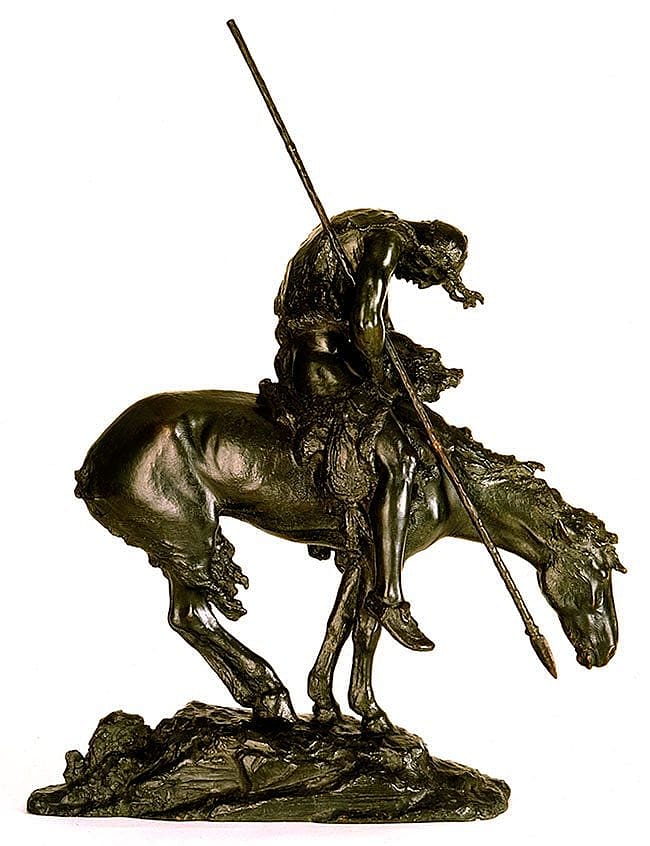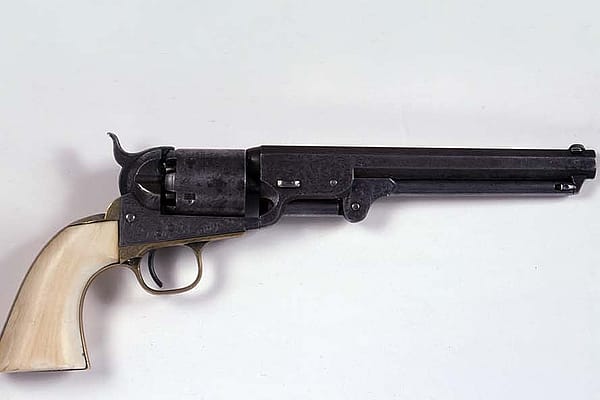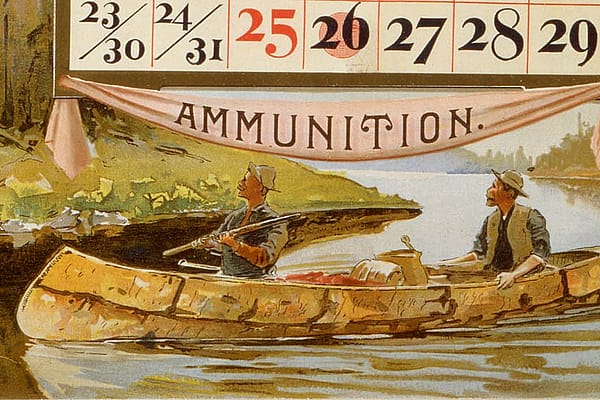Treasures from Our West: James Earle Fraser’s “End of the Trail”
Originally featured in Points West magazine in Spring 2013
End of the Trail by James Earle Fraser
James Earle Fraser’s sculpture End of the Trail succinctly and pointedly summarized American perception of Native Americans in the early twentieth century. A forlorn warrior sits slumped on his pony. His moccasined feet dangle loosely, and his spear points diagonally toward the ground. The downward momentum pushes the horse and rider toward a small, rocky precipice in defeat and despair.
Fraser had grown up in the West at the end of the frontier days, hearing stories of the plight of the Indian. Following training in Minneapolis and Chicago, he worked in Paris as an assistant to American sculptor Augustus Saint-Gaudens. Influenced by Saint-Gaudens’s aim to create sculpture perceived as distinctly American, Fraser synthesized his French-trained aesthetic with American western subject matter.
When the sculpture was displayed at the Panama-Pacific International Exposition in San Francisco in 1915—at two and one-half times life size—a guidebook explained, “The Indian has ridden for many a weary day…but alas!…His trail is now lost[,] and on the edge of the continent he finds himself almost annihilated” (James, Sculpture of the Exposition Palaces and Courts, San Francisco, 1915, page 34). At the Exposition, this work won the gold medal for sculpture, and its popularity assured the image’s permanence in the minds of American viewers. Small replica sculptures were soon available, and the silhouetted image decorated bookends, ashtrays, postcards, and even silverware.
The power of visual imagery cannot be underestimated, and although Native Americans had never vanished and were very much alive in the early twentieth century, Fraser’s image perpetuated a stereotype that had a lasting impact on American perception of Native Americans as a disappearing race.
James Earle Fraser (1876 – 1953). End of the Trail, modeled 1894, reworked 1915, cast ca. 1918 – 1923. Bronze. Clara Peck Purchase Fund. 112.67
Post 144
Written By
Nancy McClure
Nancy now does Grants & Foundations Relations for the Center of the West's Development Department, but was formerly the Content Producer for the Center's Public Relations Department, where her work included writing and updating website content, publicizing events, copy editing, working with images, and producing the e-newsletter Western Wire. Her current job is seeking and applying for funding from government grants and private foundations. In her spare time, Nancy enjoys photography, reading, flower gardening, and playing the flute.










